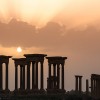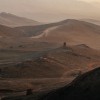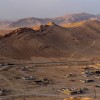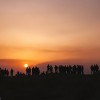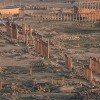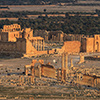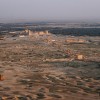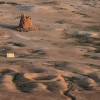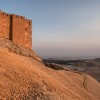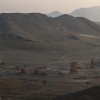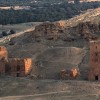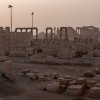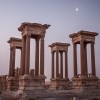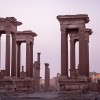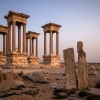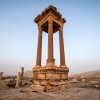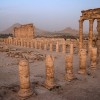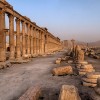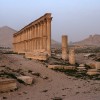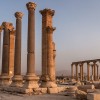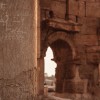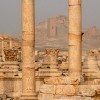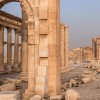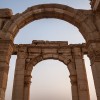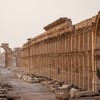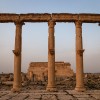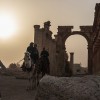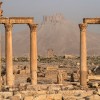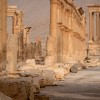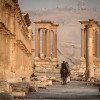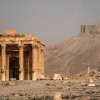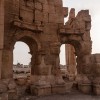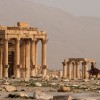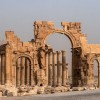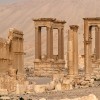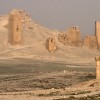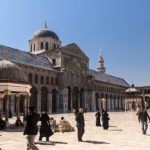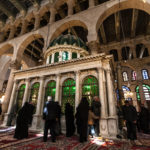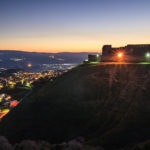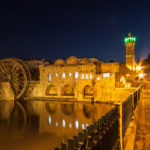The ancient Roman Ruins of Palmyra
Some thousands of years ago already the mighty Romans appreciated the oasis of Palymra (تدمر), nowadays Syrian Tadmur, as a place amidst the desert to refuel mind, body and soul. They developed the oasis into becoming a city. When their empire collapsed they left us behind a place where the disappearing of an ancient power couldn’t be more alive. Palmyra’s unique historic charm easily matches the spirit of big wonders like the pyramids or rock-hewn city of Petra, in particular when the rising or setting desert sun stages the magnificent Tetrapylon.
On an adventurous ride through the desert with a normal car speeding at 80-90km/h my fingers cling to the interior the same way like my driver’s oily hands grab the steering wheel. With answers and commenting everything with: is crazy, is very crazy, is very nice and is very old the ride verbally seen was as odd as the desert, but somehow funny.
About half an hour before sunset starts I arrived Tadmur, the city framing the Palmyra oasis. Instantly I headed on to the Arabic citadel, an elevated fortress being located some 4-5km from the settlement. The mountain provides a marvellous view of the Valley of Tombs and of course the antic columns remnants, but also you can meet plenty of hawkers trying to sell rubbish.
The presence of large numbers of tourists is not really what’s called romantic, though standing on the Arabic citadel mountain it is an optical delicacy to watch the shadows of tombs, rocks and columns getting longer and longer, while the scenery disappears more and more in colour ranging from orange, red to violet and grey.
I went to bed early as Tadmur doesn’t really have much to see as between sunset and sunrise, nor there are culinary delights to discover. Falling asleep early guarantees to be fit to take advantage of the light of the rising sun, but somehow the screen doors didn’t let me sleep much as wind got stronger smashing them against the walls.
Until the morning hours that wind developed to become a little storm whipping sand and dust into my face. To boot it was really cold, as my exhalations began to steam. Dust and sand of course had in influence on the light conditions. For friends and fans of Düsseldorf School way of photography that meant superb diffuse light conditions, but sometimes the sunrays could also touch the columns directly. Step by step the sun dispelled the cold and painted Palmyra with hues reaching from dull orange-brown to gentle pink and blue. Used photo equipment: Canon EOS 20D, Tamron 17-50 f/2.8, Tamron 28-75 f/2.8, Sigma 80-400 DG OS f/4.5-5.6

